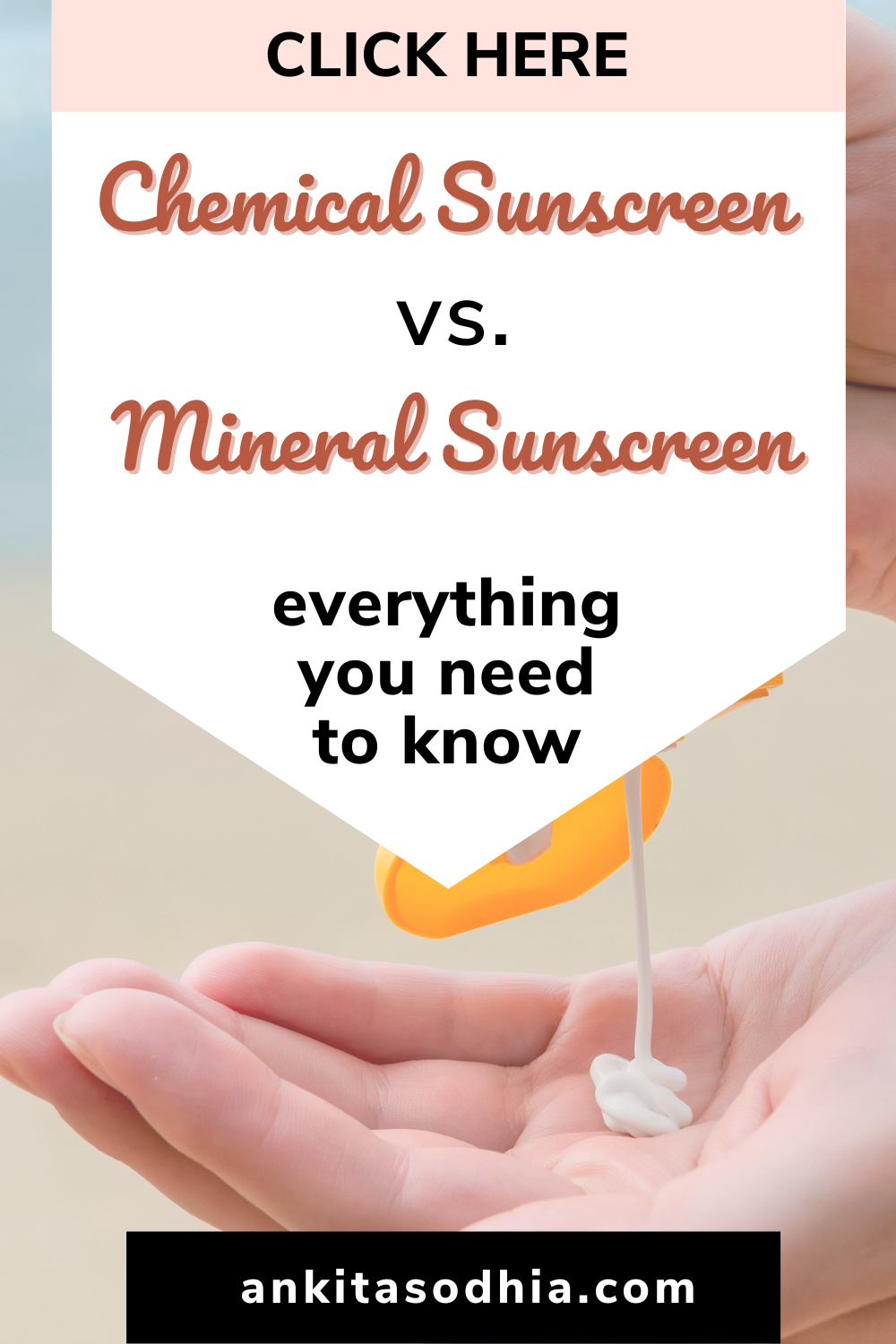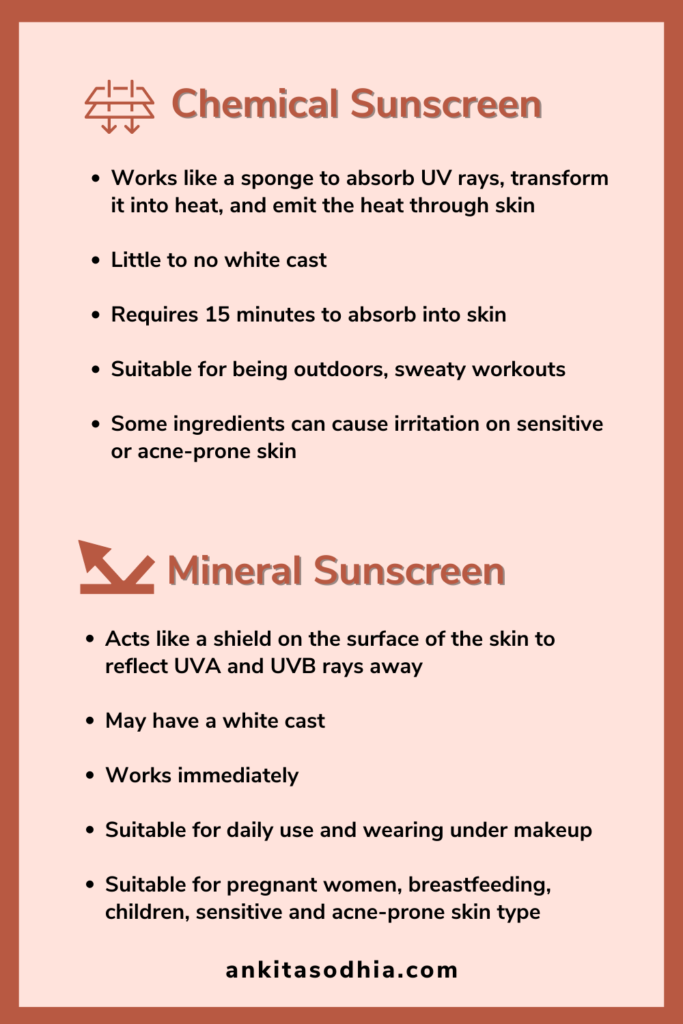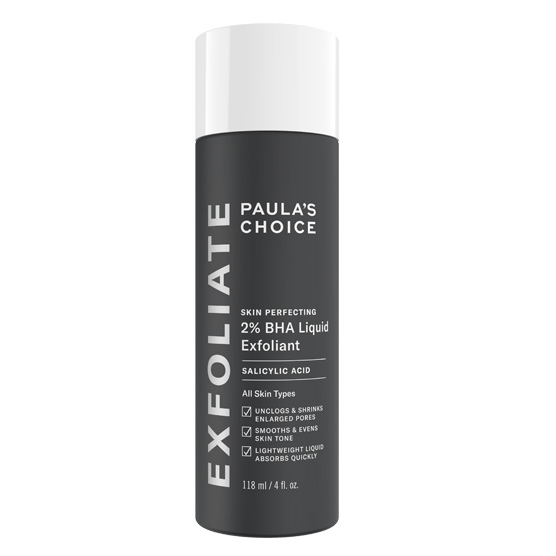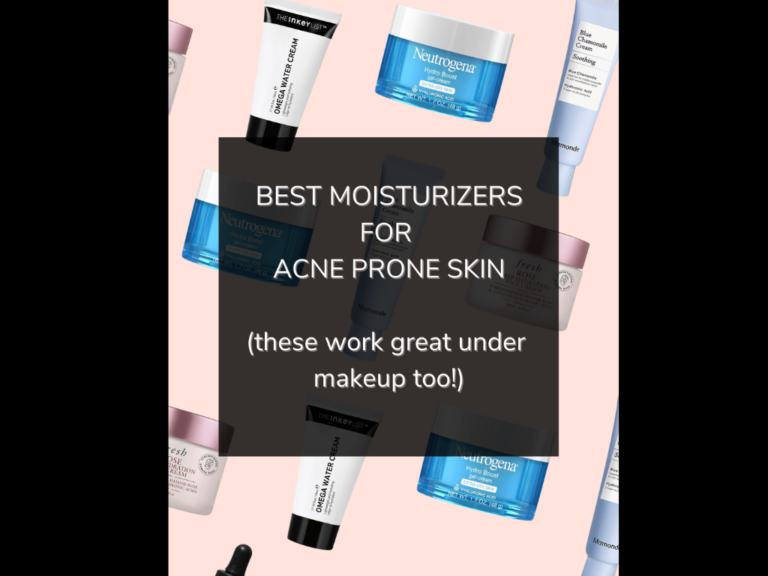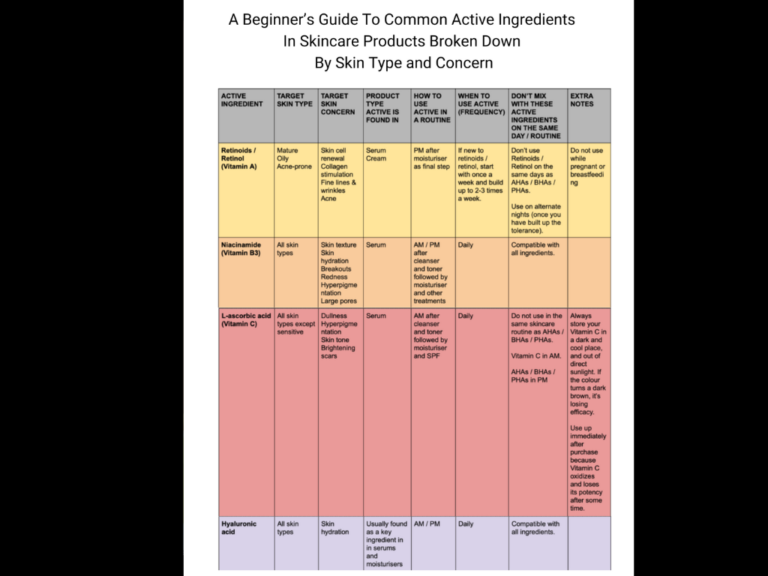Chemical vs Mineral Sunscreen: Everything You Need To Know
Chemical vs mineral sunscreen. Here are the explanations you need to decide what type of sunscreen makes sense for you.
Table of Contents
What is a chemical sunscreen?
Chemical sunscreen works like a sponge. It absorbs UVA and UVB rays to transform them into heat, and emit the heat through the skin. The main ingredients in chemical sunscreens are avobenzone, octisalate, octocrylene, homosalate, or octinoxate. (Oxybenzone used to be a very popular ingredient in chemical sunscreens, but more brands and companies are going oxybenzone-free. Read more below.)
The formulas of chemical sunscreens are often lightweight, sheer or invisible, and have little to no white cast on application, which is what makes them more desirable.
Chemical sunscreens require 15 minutes to fully absorb into the skin to be effective for sun protection.
Who is chemical sunscreen best suited for?
If you spend a lot of time outdoors or play sports, then a chemical sunscreen works better for you because it lets the skin breathe by releasing UV rays as heat.
Why is chemical sunscreen criticized? What is oxybenzone?
Chemical sunscreen gets a bad rap due to the ingredient oxybenzone, which is an organic compound that protects against UVA and UVB rays. It is a popular ingredient in other beauty products such as hairsprays and nail polish because it is a photostabilizer. Oxybenzone helps UV filters in these products, which protect our skin, from becoming less effective in sunlight.
However, there is some debate on the potential harmful side effects from using oxybenzone daily. Some studies show that oxybenzone enters the bloodstream and there may be a link with effects on some hormone functions in the body. That’s why pregnant women should avoid using chemical sunscreen with oxybenzone. Many doctors also advise against using sunscreen with oxybenzone on babies and young children.
There are some studies which also show that oxybenzone may be causing environmental damage to coral reefs.
Oxybenzone (and some of the other chemical sunscreen ingredients) may also cause irritation to sensitive and acne-prone skin.
Many brands have stopped using oxybenzone and you can find oxybenzone-free and reef-safe formulas easily.
Popular oxybenzone-free chemical sunscreens
- Neutrogena Clear Face Oil-Free Sunscreen
- La Roche-Posay Anthelios 60 Melt-In Sunscreen Milk
- Supergoop Unseen Sunscreen Broad Spectrum SPF 40
- Use a mineral sunscreen, which are completely oxybenzone-free
What is a mineral sunscreen?
Mineral sunscreen acts as a shield on top of the skin to act as a physical barrier to reflect UVA and UVB rays away from skin. This is why mineral sunscreen is also referred to as physical sunscreen. The main ingredients in mineral sunscreen are zinc oxide and titanium oxide.
Due to the physical barrier on the skin, mineral sunscreen formulas tend to be thicker, heavier and white, so there is a higher chance of a white cast on the face. That being said, don’t stress. Mineral sunscreens have come a really long way in terms of formulations and there are many products available that blend into the skin completely with no white cast at all.
Mineral sunscreens start protecting against the sun on the surface of the skin immediately.
Who is mineral sunscreen best suited for?
If you have sensitive or acne-prone skin, then a mineral sunscreen may be a better match because it doesn’t go into the skin and less chances of clogging pores.
If you are pregnant or breastfeeding, then switch over to mineral sunscreen.
Great for babies and young children.
Related:
I Found The Perfect Mineral Face Sunscreen For Medium To Dark Skin — And It Has No White Cast!
Best Sunscreens For Acne-Prone Skin With No White Cast
Things to look for in a good chemical or mineral sunscreen
- Broad spectrum protection against both UVA and UVB rays
- Minimum SPF 30 for the face
- Minimum SPF 50 for the body
- Water-resistant or waterproof
- Suitable for sensitive and acne-prone skin
- Oxybenzone-free formula
- Oil-free and noncomedogenic
- No white cast
- Clean, vegan and cruelty-free
How much sunscreen to use for maximum protection?
On the face, apply approximately three finger lengths (or three pumps/squirts) worth of sunscreen.
For the whole body, apply approximately the volume of a golf ball.
Reapply every two hours or immediately after swimming.
Chemical vs Mineral Sunscreen: Final thoughts
In my world, the chemical vs mineral sunscreen debate isn’t about which one is better because I use both types and I like each for different reasons. It’s about being intentional about what type of sun protection I require for that day.
I have acne-prone and sensitive skin, but I still use chemical sunscreens when I am outdoors or seek no white cast. I also have a mineral sunscreen I use every single day because it looks great on the skin, but I don’t use it when I go swimming because it’s not water-resistant.
Chemical sunscreen is not better than mineral sunscreen and vice versa. Each type of sunscreen has its own pros and cons. Hopefully this blog post can help you make a more informed judgment.

